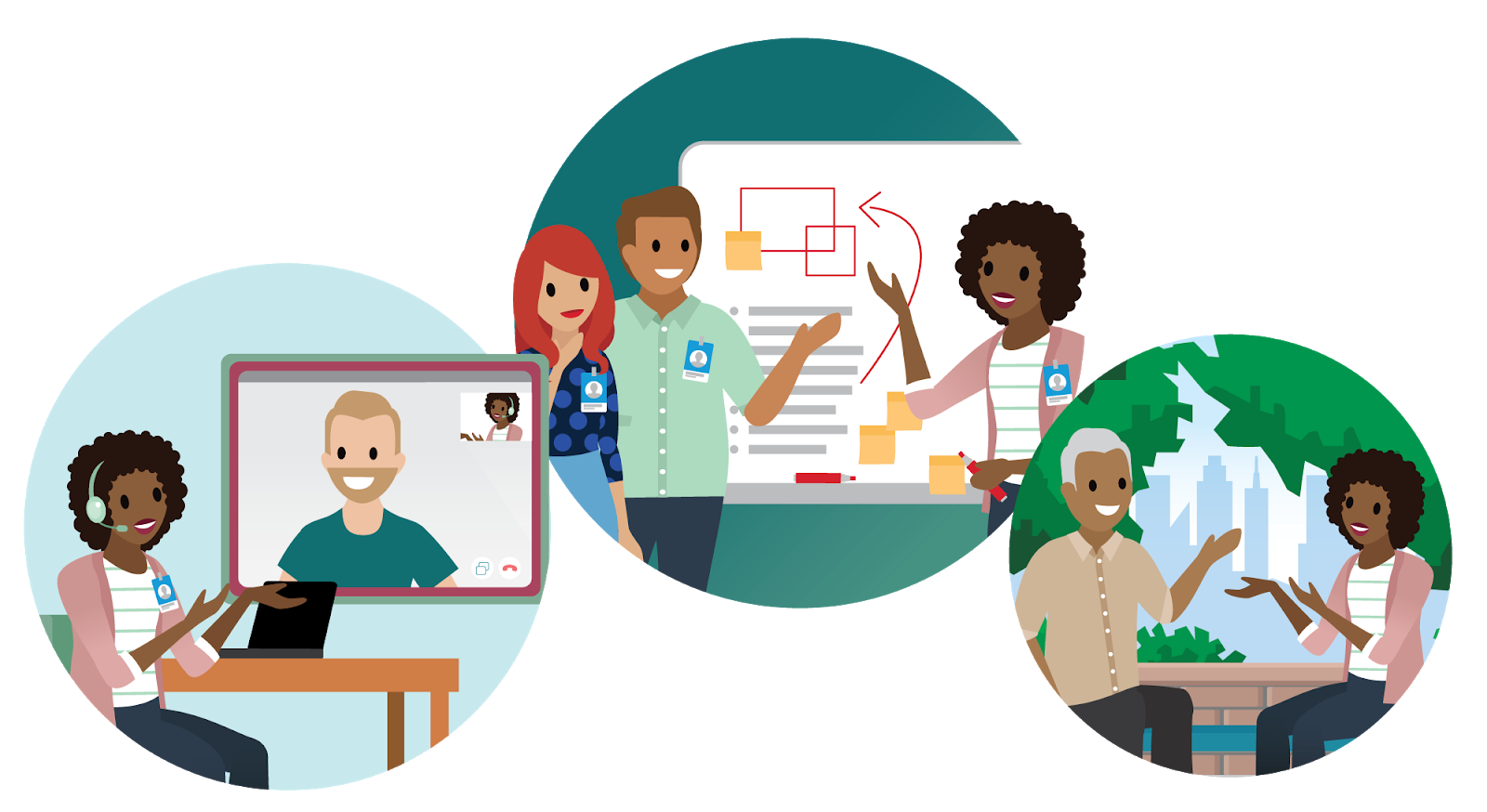Improve Relationships Using Design
Learning Objectives
After completing this unit, you’ll be able to:
- Explain how design encourages customer relationships.
- Identify ways design strengthens employee relationships.
- Describe how design improves relationships with the community.
Design as a Catalyst for Relationships
As the name implies, Relationship Design is all about building relationships. The practice doesn’t just focus on creating things or experiences that people need. It also commits to building trust and encouraging engagement, so organizations can continually meet those needs, even if they change. (And let’s be honest, they always do!)
The air travel example we talked about in the last unit shows how design facilitates relationships with and between customers. It strengthens connections people have with each other and with brands. But Relationship Design can strengthen all kinds of relationships.
In this unit, we look at:
- Relationships between a business and its customers.
- Relationships between employees within organizations.
- Relationships within and across communities.

Customer Relationships
It can be hard to keep customers happy. But it’s a lot harder when a business’ employees don’t understand customers’ needs, desires, and obstacles. When employees have deep compassion for their customers, it’s a lot easier for companies to meet them where they are.
The best way to build empathy for customers is to talk with them. Yes, it can be that easy! Open up a two-way conversation with customers, so they are heard and appreciated. The goal is to continuously improve the lives of customers, not just convince them to buy a product. Work with them to identify and develop the solutions that best meet their needs. People trust brands that take their needs seriously, value their input, and align with their values.
When using design to strengthen customer relationships:
-
Remember that users and customers are human beings (not numbers or data or dollars).
-
Prioritize in-depth, design-led research to understand what customers need, the messages they want to hear, and the challenges they face.
-
Create forums for users and customers to provide feedback and suggestions—then actively incorporate their feedback and create participation tools to collaborate with them.
Employee Relationships
For organizations to function well, the connections between employees need to be strong. Recognizing the benefits of relationship-building and incentivizing employees to develop lasting bonds creates more trusting—and more productive—workplaces in the long run. When we’re all on the same team working toward the same goal, we can get there a whole lot faster. It’s also important to have good communication across functions, tools that are actually useful, and a culture where everyone feels safe to take risks.
Relationship Design can help companies do all of that!
When we all work toward strong relationships, it helps us move in the same direction. Making ideas concrete—with things like diagrams and user flows—helps employees stay on the same page and communicate clearly. When we prototype possible solutions, we make sure our concepts really have impact. And when we create a trusting environment where employees can grow and feel safe to be themselves, everyone can do their best work.
When using design to strengthen employee relationships:
-
Increase collaboration across teams and departments by holding workshops with employees from different parts of the organization—so that diverse perspectives solve problems together.
-
Do research and use design tools (such as Journey Mapping) to better understand the employee journey and identify ways it can be improved.
-
Create a safe environment for creative risk-taking by building a culture of critique. Encourage team members to share incomplete work, and practice giving and receiving constructive feedback with compassion.
Community Relationships
We live in an interconnected world. Every choice we make is like a pebble dropped in a pool of water. The consequences ripple out along those lines of connection, usually a lot further than we realize. The products and services we create impact our communities, including people who don’t even use or buy our offerings.
When we consider the downstream implications of our business and design choices, we can influence outcomes to benefit and protect people. On top of that, if we don’t understand the ways our products and services shape the world, our company is vulnerable to surprises and scandals.
One way we can hold ourselves accountable, is to engage participants from outside our organization in the design process. This helps us design with people instead of designing for them. Because people and communities understand their needs, obstacles, risks, and opportunities best.
When designing to strengthen community relationships:
-
Prioritize diversity and inclusion on every team. We all have biases based on our limited experience, but varied life experiences and perspectives make it easier to spot issues and opportunities.
-
Introduce friction into the design process. Take time to question the potential consequences of design and business choices on communities—beyond users and customers.
-
Value the knowledge of community members, activists, and change-makers. Seek opportunities to partner with people and organizations outside of the company. Embrace coalition models and collaborative problem-solving.
As you can see, design can have a big impact on all sorts of different relationships. Next, let’s learn how to practice Relationship Design, no matter what role you’re in!
Resources
- External Link: Salesforce Idea Exchange
- External Link: Lead with Purpose: Design’s central role in realizing executive vision, ID IIT Report 2020
- External Link: Design Justice Network
- External Link: Doteveryone: Consequence Scanning Kit